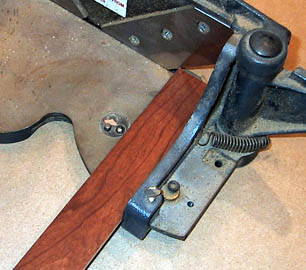Back in the early 80’s, my parents undertook a kitchen cabinet refacing project. I remember the contractor from Sears came out, sanded the old cabinets and glued down some sort of plastic laminate on the cabinet boxes. The contact cement he used made the whole house smell like an airplane-glue factory for a week. After he was finished, we were the proud owners of a new kitchen with white laminate doors and faux wood-grain sides and backs.
The New Face of Kitchen Cabinet Refacing
Over the past 30 years, a lot has changed in the world of refacing. There are still companies out there gluing down plastic laminate and installing faux wood-grain doors, but using solid wood products has become the preferred method today. So I’m going to focus on refacing with real wood and talk about the different methods that are used and the pros and cons of each.
Covering the Cabinet Boxes and Frames
After the cabinet doors have been removed, we’re left with the cabinet boxes. The boxes need to be covered to match the finish on the new doors that will be installed later. Our options for covering the boxes are to use a veneer, plywood or slices of solid wood.
Veneer is probably the most common. A veneer sheet is an extremely thin slice of real wood, less than 1 millimeter thick. Sometimes it comes from the factory with an adhesive and paper backing already applied. The cabinet refacer only has to cut it to size, peel off the paper backing and press it in place – just like applying a sticker. The advantage to this method is that it’s relatively quick and easy to do. (If you’re considering kitchen cabinet refacing as a DIY project, this is the most ‘user friendly’ method. The main disadvantage to refacing with veneer is that the adhesive used to attach it can fail. I’ve been out to redo cabinets and have been able to peel of the veneer in sheets like wallpaper. I’m not saying that all veneers fail – but there is that potential, especially in areas that are subject to a lot of heat and steam.
Plywood is another alternative. Prefinished pieces of 1/8″ or 1/4″ plywood are attached to the cabinet boxes with adhesive and usually with a pin nailer. Plywood will stay in place. The only problem is that the cut edges of plywood don’t look very nice. If the plywood is cut into strips to cover the cabinet frames, the exposed edges look rough. But on cabinet sides, plywood is the best option for sure.
 Covering the face frames is the tricky part of a kitchen cabinet refacing project. The best way to go about this is to use thicker slices of real wood. If the thickness is between 1/8″ and 1/4″, the material can be held in place with pin nails as well as adhesive and won’t be prone to blister or bubble like a veneer. It can be quite time consuming to custom trim each piece to form a tight joint, but the payoff will be a more durable, better looking kitchen cabinet refacing project.
Covering the face frames is the tricky part of a kitchen cabinet refacing project. The best way to go about this is to use thicker slices of real wood. If the thickness is between 1/8″ and 1/4″, the material can be held in place with pin nails as well as adhesive and won’t be prone to blister or bubble like a veneer. It can be quite time consuming to custom trim each piece to form a tight joint, but the payoff will be a more durable, better looking kitchen cabinet refacing project.
